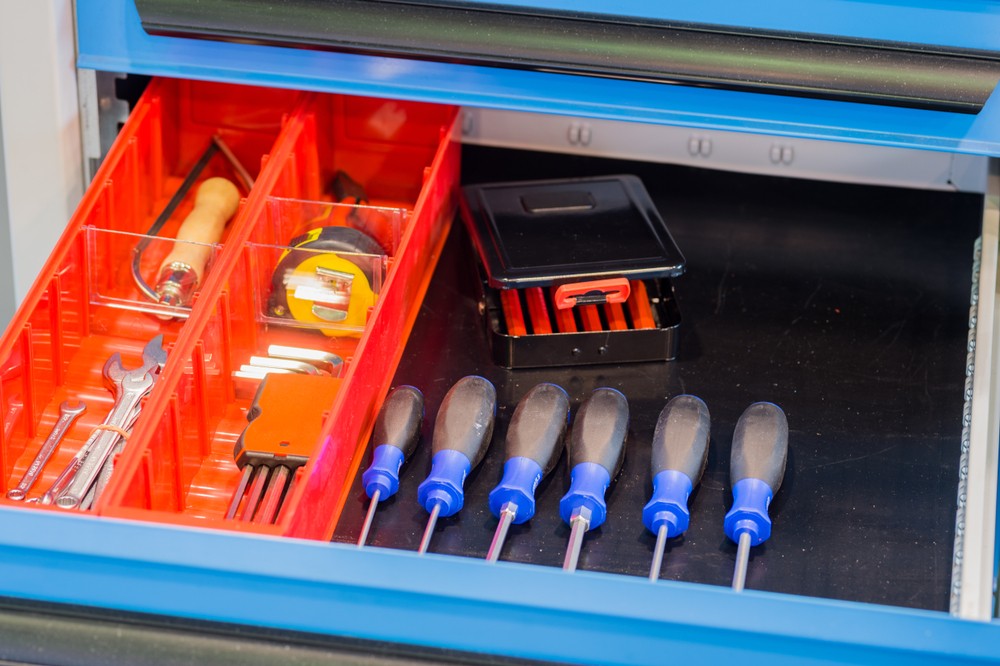What is 5S as a Lean Manufacturing Concept?

Lean manufacturing concepts abound. Of the numerous philosophies producers should be familiar with to cut waste, improve productivity, and streamline the factory environment, one of the simplest — and most important — is 5S.
5S is an organizational system used by manufacturers to maximize the space available to them and to make the best use of square footage in a facility. It improves organization and contributes to safety, cleanliness, and efficiency. It’s a powerful concept virtually any manufacturing company can leverage with minimal barriers.
The Principles of 5S In Lean
Here’s a brief look at each “S” of the 5S system: what they mean, why they’re important, and how they factor into better space utilization and efficiency.

1. Seiri (sort)
The first S is “sort” or seiri in Japanese. This part of the 5S system involves separating tools, parts, and all other necessary materials from the unnecessary items. Sometimes, manufacturers don’t realize how much floor space unnecessary items occupy. Routinely sorting through materials frees up floor space taken up by items less deserving of space or, in many cases, downright unimportant. Sorting sheds light on what matters and what deserves to go.
2. Seiton (set in order)
After clearing away unnecessary work items, manufacturers can start on the next pillar: “set in order” or seiton. Setting things in order involves organizing the necessary items picked out during the sorting process. Properly arranging and identifying materials makes them much easier to find. There are several methods manufacturers use for identifying necessary materials, including place cards and labels. It’s also a good idea to install properly labeled shelves and cabinets to store important parts.

3. Seiso (shine)
Seiso or “shine” is an essential step beyond just tidying up. While this step focuses on cleaning, the implications of a thorough cleaning are far-reaching. For example, cleanliness might bridge into maintenance and repair, and it is an effective way to promote safety. This step is also part of bringing pride of work into the workplace. Taking care of the workplace and everything in it encourages employees to do the same — including treating equipment with care and following an organizational strategy.
4. Seiketsu (standardize)
Seiketsu, the standardize method, ensures routine implementation of the previous three steps. Standardizing should involve inventorying, ordering, and establishing regular cleaning and maintenance schedules. Developing a routine for steps one through three will promote consistency for all necessary tasks and procedures. Good tools for standardizing include place cards, checklists, job cycle charts, and more.

5. Shitsuke (sustain)
For the 5S system to improve efficiency, employees should perform all five steps on a consistent basis. The is where shitsuke, or sustaining, comes in. Sustain consistency by utilizing signs, posters, and training to remind employees to follow 5S procedures. Management might consider hosting team and management check-ins and employee performance reviews on implementation of the 5S philosophy. It’s also a good idea to delegate 5S task management to stakeholders who will embody the philosophy by bringing personal responsibility to it.
A place for everything and everything in its place
While it may require some adjustments, implementing the 5S system helps improve safety, reduce costs, lower defect rates, and much more. The 5S system offers an effective way to improve productivity while reducing waste. It can even improve employee morale. It’s one of the simplest lean methodologies to embrace — with proven, profound benefits to justify it again and again.